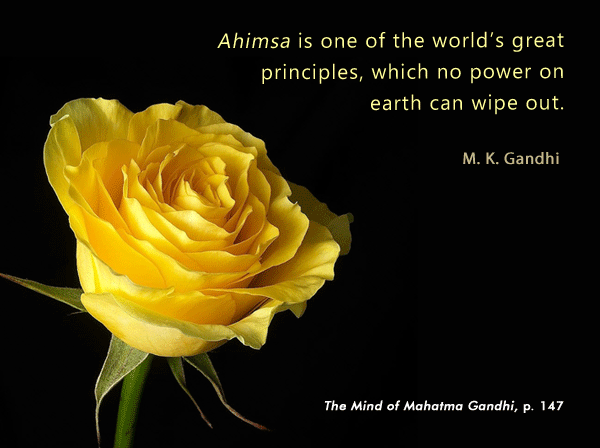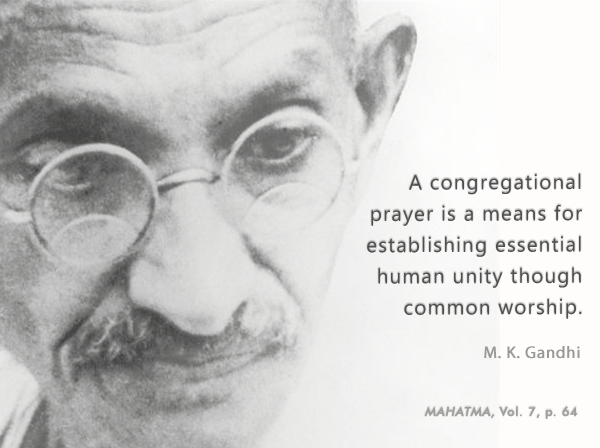“The conditions of a successful strike are simple. And when they are fulfilled, a strike need never fail.”
–M. K. Gandhi (Young India, February 16, 1921)
Would it be a surprise to learn that Gandhi was in favor of laborers and was on the side of strikers throughout his life? Of course not.
He knew, and wanted others to realize, that workers have a lot of power–it is their work that keeps the wheels of society moving. He was convinced that workers needed always to advocate for themselves to ensure dignity in their conditions and recognition of their rights. Strikes become an important tool to be used, he felt, as with any tool in the nonviolence toolkit: with discernment, which keeps the tool sharpened and powerful.
But how do you strike, according to Gandhi? Do you just stop going to work? What happens if those against whom you are striking just replace you at your job? A few years after resorting to fasting (one of the first of his career) to boost the flagging morale of striking workers in Ahmedabad in 1918, he came up with a few, energy-saving guidelines.
Here are his six rules for strike success:
1. The cause must be just.
2. There must be “practical unanimity” among all of the strikers (hence the 1918 fast).
3. No violence should be used against any non-strikers.
4. Strikers should not draw from union funds during the strike, but turn instead to some “useful and productive temporary occupation.”
5. If there is enough labor to simply replace the strikers, then a strike will not work. Resignation is the way forward, instead.
6. Follow all rules 1-5, without overlooking or ignoring any of these recommendations.
You have to love that last one.
Experiment in Nonviolence:
Based on his list about strikes, can you anticipate what might be some of Gandhi’s guidelines for resignation as a tool of nonviolent strategy?
Courtesy: www.mettacenter.org
–M. K. Gandhi (Young India, February 16, 1921)
Would it be a surprise to learn that Gandhi was in favor of laborers and was on the side of strikers throughout his life? Of course not.
He knew, and wanted others to realize, that workers have a lot of power–it is their work that keeps the wheels of society moving. He was convinced that workers needed always to advocate for themselves to ensure dignity in their conditions and recognition of their rights. Strikes become an important tool to be used, he felt, as with any tool in the nonviolence toolkit: with discernment, which keeps the tool sharpened and powerful.
But how do you strike, according to Gandhi? Do you just stop going to work? What happens if those against whom you are striking just replace you at your job? A few years after resorting to fasting (one of the first of his career) to boost the flagging morale of striking workers in Ahmedabad in 1918, he came up with a few, energy-saving guidelines.
Here are his six rules for strike success:
1. The cause must be just.
2. There must be “practical unanimity” among all of the strikers (hence the 1918 fast).
3. No violence should be used against any non-strikers.
4. Strikers should not draw from union funds during the strike, but turn instead to some “useful and productive temporary occupation.”
5. If there is enough labor to simply replace the strikers, then a strike will not work. Resignation is the way forward, instead.
6. Follow all rules 1-5, without overlooking or ignoring any of these recommendations.
You have to love that last one.
Experiment in Nonviolence:
Based on his list about strikes, can you anticipate what might be some of Gandhi’s guidelines for resignation as a tool of nonviolent strategy?
Courtesy: www.mettacenter.org


